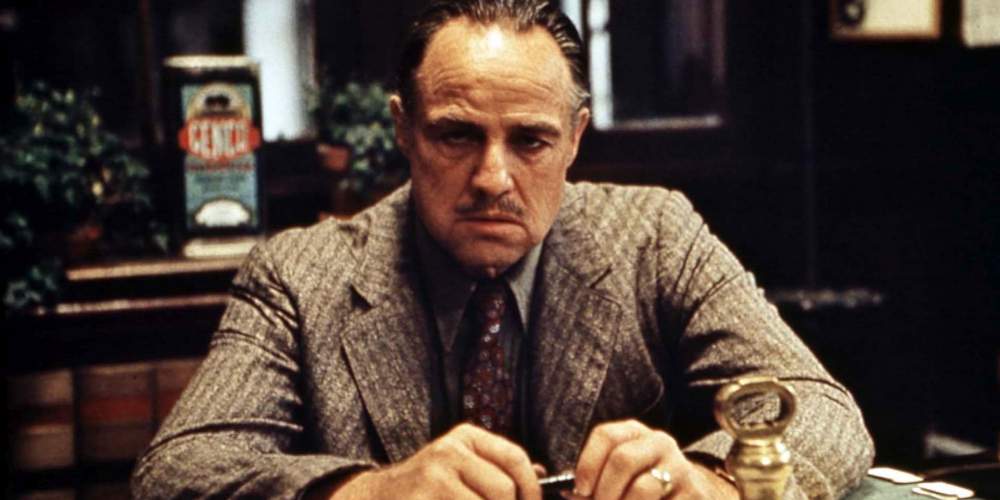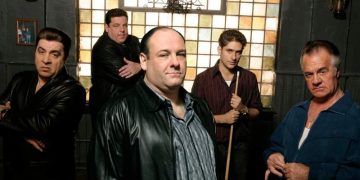As Francis Ford Coppola stood in Marlon Brando's Hollywood home, watching the actor stuff cotton balls into his jowls to re-shape his face to match that of a much older man, he knew he had an uphill battle on hand to convince executives that Brando was the one for the role.
Being the cunning film director he was, Coppola put Brando's audition tape—which Brando thought was an equipment test—in the middle of the audition tapes pile for Paramount executives. And upon watching Brando as Don Vito Corleone, Paramount agreed to hire the actor.
With his leading man in place, Coppola's vision then turned—like the mighty eye of Sauron—to the rest of the cast, many of whom he also faced uphill struggles against the studio in casting.
Fortunately, Coppola consistently won his battles: first, in casting (and keeping) Al Pacino; second, in enduring a mob threat on the casting of Al Martino as Johnny Fontane; third, in proving to the studio that Robert Duvall was the right choice to portray Tom Hagen.
Armed with his hastily-put-together cast and Mario Puzo's adaptation of his original book, Coppola went to work and shot over 90% of the movie on location in New York and Sicily. All the while, Paramount breathed down his neck, especially to undo the casting of Pacino.
The end result? The Godfather. A film that conquered the Academy Awards on Oscar night, taking home Best Picture, Best Actor (though Brando refused the award), and Best Adapted Screenplay. The bickering between Paramount and Coppola had reached a fruitful conclusion.
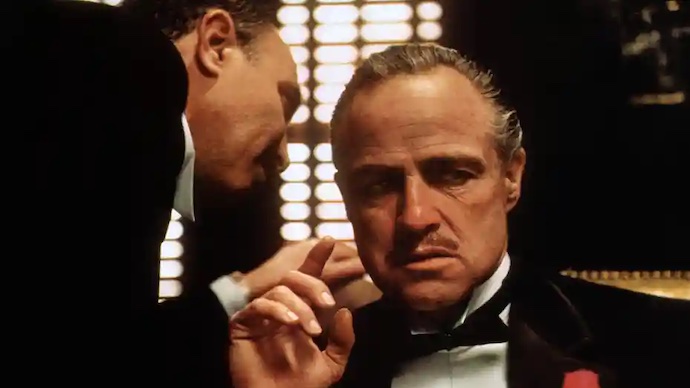
After the success of The Godfather—and despite the struggles of the first film's production process—Paramount was interested in Puzo's ideas for a sequel. Sequels weren't common in Hollywood at the time, as most studio-funded pictures were meant to be one-off pieces.
But Paramount green-lit the sequel, with the condition that Coppola return as director.
Coppola was initially unwilling to direct another Godfather film and cited Martin Scorsese as a potential replacement, but Paramount gave Coppola unilateral control over the sequel. That paved the path for his return.
For the flashback sequences, Robert DeNiro was cast as the young Vito Corleone, providing the film with a prequel element that allowed Puzo to show both the rise and decline of the Corleone family.
The title was announced as The Godfather: Part II—another fight that Coppola won with Paramount, as the studio didn't want to use a number—and the film was set for a December 1974 release.
The sequel's success influenced and popularized numbered sequels in Hollywood. Before The Godfather: Part II, no mainstream film had ever had a numbered sequel due to studios (strangely) laboring under the opinion that audiences didn't want to see more of the same story.
Upon release, Puzo's narrative structure caused a divisive critical reception. Many felt that the film failed to balance out either story, cutting between timelines too quickly without allowing a single one to evolve.
But the tides of opinion changed over time, and iconic film critic Roger Ebert stated in his retrospective review:
"When the characters in a film take on a virtual reality for us, when a character in another film made 30 years later can say 'The Godfather' contains all the lessons in life you need to know, when an audience understands why that statement could be made, a film has become a cultural bedrock."
Roger Ebert on The Godfather: Part II
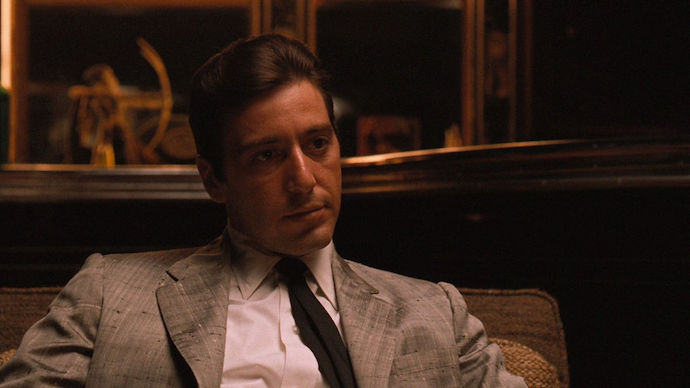
The Godfather: Part II became the first sequel film to win the Academy Award for Best Picture, proving to Hollywood studios that sequels not only had financial opportunities that they previously considered unviable, but also potential to be met with critical adoration.
Furthermore, the success of both films propelled the gangster genre of movies into the mainstream as interest in the activities of crime syndicates entered the cultural lexicon.
Phrases from the films were repeated by excited fans, who would quote Brando's famed line ("I'll make him an offer he can't refuse") in their workplaces and personal lives. Even real mobsters took the film to heart, with criminal underbosses stating how impressed they were with the film.
And we can't forget the impact that The Godfather films had on several promising careers, including Martin Scorsese and Brian De Palma. Additionally, David Chase (the creator of The Sopranos) has often said that his universally adored TV series about a depressed mobster in therapy wouldn't exist without Coppola's work.
The industry shift represented by both Godfather films had studios rethinking their production beliefs and methods, and that shift has threaded itself through to modern cinema.
The greatest film franchise of our time—the Marvel Cinematic Universe—is powered by sequels and installments throughout the shared comic book universe, and it has essentially pushed the idea of cinematic follow-ups to new heights. And it all started with The Godfather: Part II.
The impact of The Godfather films has been so wide-reaching that there have been endless references and parodies in pop culture, from Fat Tony in The Simpsons to Jerry Seinfeld's description of a "massacred" t-shirt, and even the term "Godfather."
For decades, the two Godfather movies have inspired countless other films and filmmakers. Coppola moved on to other projects, as did his cast, who were forever indebted to him and the saga for their success.
Then, in the late-1980s, Francis Ford Coppola and Mario Puzo teamed up again for another installment: the final installment in the saga, a piece they felt would represent the story's epilogue.
The story took place years after the first films, and the absence of Robert Duvall's Tom Hagen meant that the 1990 endcap to the Godfather films didn't meet with the same acclaim as its predecessors, even if it still garnered seven Academy Award nominations.
Coppola's reason for returning to the films? Allegedly, because of the decline in his career during that time; however, this is unconfirmed.
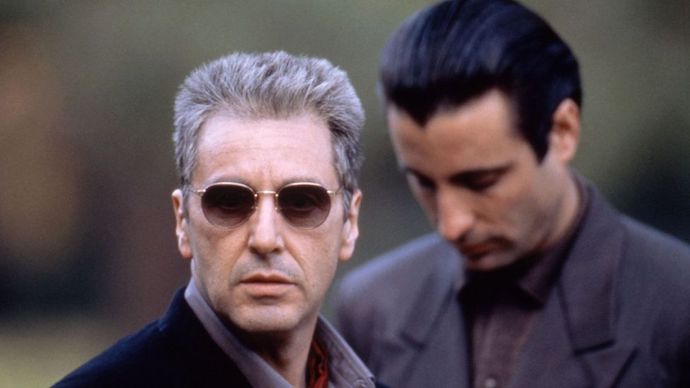
In 2020, Coppola revealed that he recut The Godfather: Part III and titled it The Death of Michael Corleone, which met with a better critical response from critics. Sadly, like a punch-drunk boxer, Coppola's effort felt like an apology for the theatrical release 30 years prior.
Part I was family over business. Part II was business over family. Part III became lost in the middle, unable to take sides and therefore unable to be as compelling as its forebears.
In the end, the series' legacy had been set in 1974, when Part II became arguably better than the first and launched several cinematic trends: film sequels, crime culture, and non-linear narrative structures.
